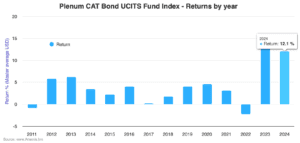Integrated Partners CEO Sees 'Exciting' Years Ahead for RIAs

It depends. At the very beginning, we go through a bit of a diagnostic process where we look at everything they’re doing.
When we point out they’re not doing the best they can possibly do for themselves and their families, they quickly become serious and want to learn more.
What’s key in coaching your advisors?
When advisors walk in the door trying to present something without understanding exactly where the client is [in their lives], they’re in a tough spot.
Our process is all about understanding and diagnosing their current situation.
A concept I use is the “complexity curve.” Clients have two levels of complexity: One is that their finances get more complex over time.
The other is that so do their personal lives: Their children marry; and then they have grandchildren.
We’re most impactful and can make a big difference when their personal lives become more complex.
What prompted you to launch the CPA Alliance?
I was a financial advisor with Cigna Financial Advisors and working inside the wirehouse community [Morgan Stanley, Dean Witter, Smith Barney]. Advisors would bring me in to do all the planning for their wealthiest clients.
The only challenge was that we couldn’t manage the money. After we did the planning, the assets [stayed with] the wirehouse advisors.
1996 was the first year that accounting firms in Massachusetts could share in revenue, with the approval of their clients. We were one of the first to dig into that.
I saw the opportunity to do the same kind of financial planning with wealthy clients that I was doing at the wirehouses but also manage the assets. So I started my own firm and the CPA Alliance Program.
What is the biggest challenge for financial advisors today?
Understanding where they are along the continuum of the business life stages.
The industry has advisors who are five to 10 years away from potentially retiring or selling their practice.
So in coaching our advisors, I spend a lot of time talking about where they are and what they should be looking at going forward and making plans accordingly.
Speaking of going forward, what are your thoughts about artificial intelligence in the advisory space?
As a firm, we’re embracing AI. At the end of this year and through next year, we’ll be introducing the advisors to a new technology platform fueled by AI capabilities.
We want to be at the forefront of AI integration in financial services. We’re trying to think about the possibilities of using AI and then building our technology [to meet those needs].
What’s an example of how your advisors are using AI now?
It’s helping them answer questions on our tech platform, such as those around financial planning or running their practices more efficiently.
Instead of having to search for the answers, our internal AI structure is there to help guide them along the way. It’s been very popular.
On what do you train your AI technology? That is, where do those answers come from?
They’re from our team. We’re being very careful.





